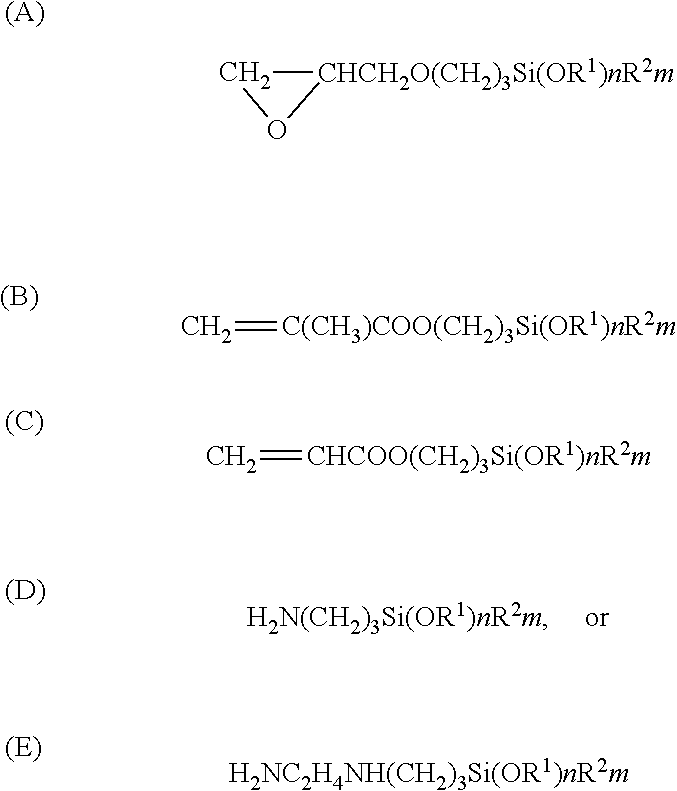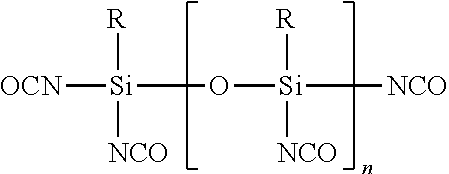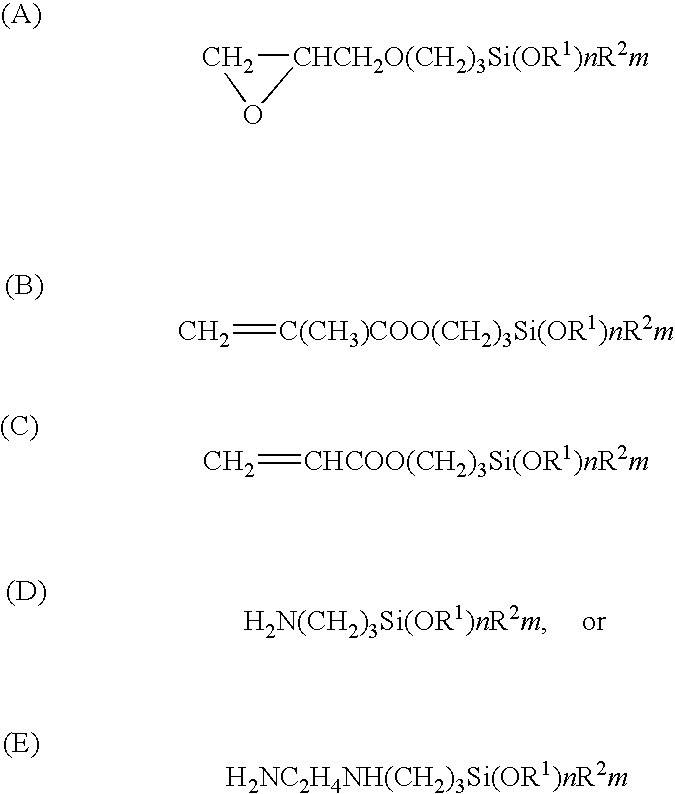Aqueous surface-treating agent
a surface treatment agent and water technology, applied in the direction of plastic/resin/waxes insulators, transportation and packaging, coatings, etc., can solve the problems of affecting the automatic feeding of parts, and affecting the quality of applied liquid materials, etc., to achieve distinguished durability, low environmental load, and good applicability
- Summary
- Abstract
- Description
- Claims
- Application Information
AI Technical Summary
Benefits of technology
Problems solved by technology
Method used
Image
Examples
example 1
[0037]
Parts by weightBoth terminal hydroxyl groups-containing4.07 (1.34)emulsion polymerization polydimethylsiloxaneaqueous emulsion (viscosity at 25° C.:100,000 mPa · sec; nonvolatile matters: 33%)Hydrazide and carbonyl group-containing2.71 (0.98)polyurethane resin aqueous emalsion (solid matters:36 wt. %; Daotan VTW 6462 / 36WA)Silanol-modified polyurethane resin aqueous emulsion6.67 (2.00)(solid matters: 30 wt. %; Tackelack WS-5000,a product of Mitsui Chemical Polyurethane Co.)γ-glycidoxypropyltrimethoxysilane0.68Dimethyllaurylamine oxide (amphoteric surfactant)0.45Water85.42
[0038]The foregoing components (figures in the parentheses show weights of solid matters) were mixed together, and further subjected to emulsification treatment by a homogenizer and an ultrasonic treating unit to obtain a surface-treating agent. The resulting surface-treating agent had 2.98 parts by weight of total polyurethane resins, which corresponded to 222.3 parts by weight on the basis of 100 parts by we...
example 2
[0072]In Example 1, the same amount of γ-methacryloxypropyltrimethoxysilane was used in place of γ-glycidoxypropyltrimethoxysilane. The resulting surface-treating agent had 2.98 parts by weight of total polyurethane resins, which corresponded to 222.3 parts by weight on the basis of 100 parts by weight of silicone oil.
example 3
[0073]In Example 1, the same amount of a self-cross-linking group-free polyurethane resin aqueous emulsion (solid matters: 30 wt. %; TACKELACK W-6061, a product of Mitsui Chemical Polyurethane Co.) was used in place of the silanol-modified polyurethane resin aqueous emulsion. The resulting surface-treating agent had 2.98 parts by weight of total polyurethane resins, which corresponded to 222.3 parts by weight on the basis of 100 parts by weight of silicone oil.
PUM
| Property | Measurement | Unit |
|---|---|---|
| kinematic viscosity | aaaaa | aaaaa |
| kinematic viscosity | aaaaa | aaaaa |
| thickness | aaaaa | aaaaa |
Abstract
Description
Claims
Application Information
 Login to View More
Login to View More - R&D
- Intellectual Property
- Life Sciences
- Materials
- Tech Scout
- Unparalleled Data Quality
- Higher Quality Content
- 60% Fewer Hallucinations
Browse by: Latest US Patents, China's latest patents, Technical Efficacy Thesaurus, Application Domain, Technology Topic, Popular Technical Reports.
© 2025 PatSnap. All rights reserved.Legal|Privacy policy|Modern Slavery Act Transparency Statement|Sitemap|About US| Contact US: help@patsnap.com



